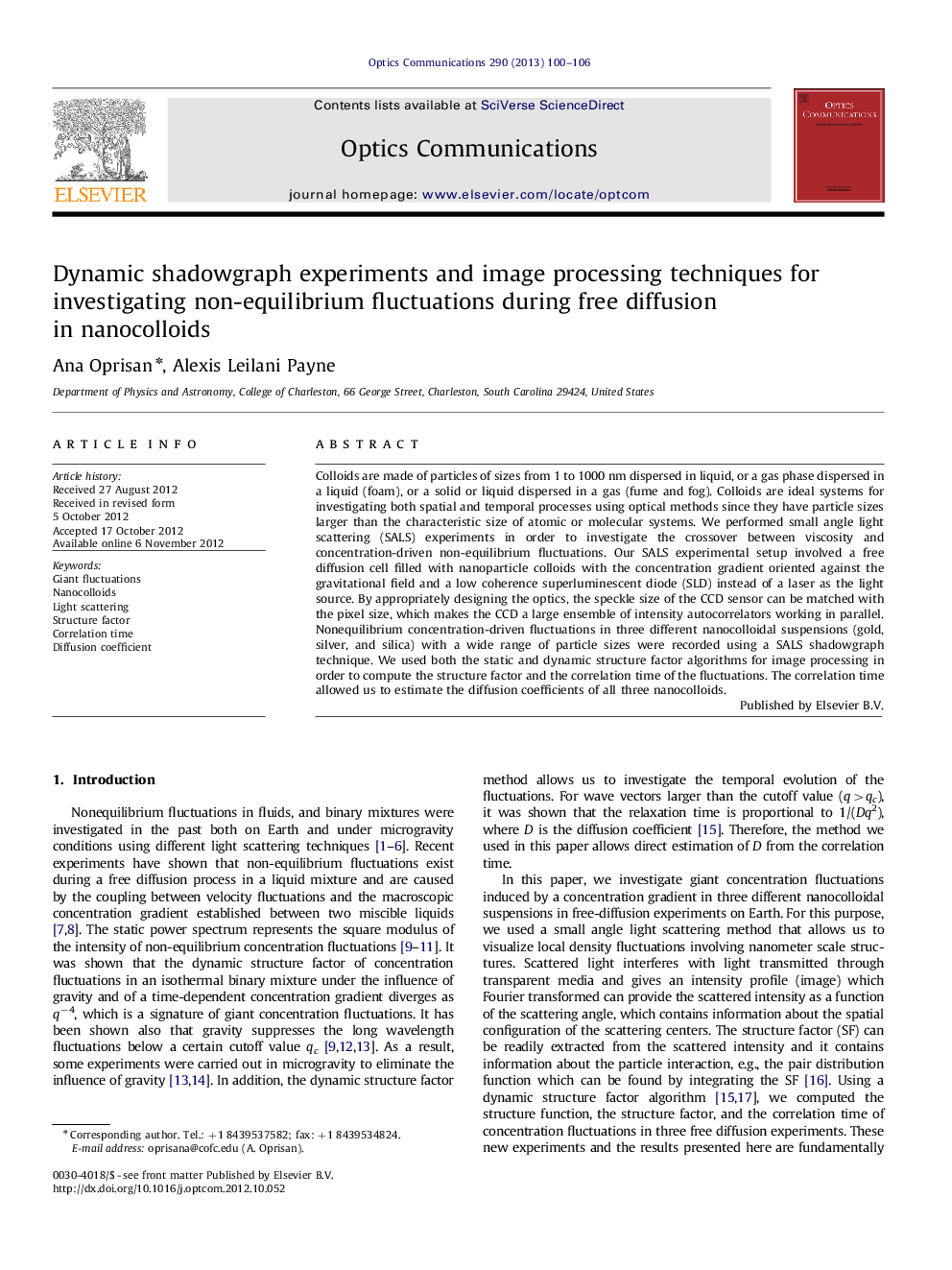| Article ID | Journal | Published Year | Pages | File Type |
|---|---|---|---|---|
| 1535574 | Optics Communications | 2013 | 7 Pages |
Colloids are made of particles of sizes from 1 to 1000 nm dispersed in liquid, or a gas phase dispersed in a liquid (foam), or a solid or liquid dispersed in a gas (fume and fog). Colloids are ideal systems for investigating both spatial and temporal processes using optical methods since they have particle sizes larger than the characteristic size of atomic or molecular systems. We performed small angle light scattering (SALS) experiments in order to investigate the crossover between viscosity and concentration-driven non-equilibrium fluctuations. Our SALS experimental setup involved a free diffusion cell filled with nanoparticle colloids with the concentration gradient oriented against the gravitational field and a low coherence superluminescent diode (SLD) instead of a laser as the light source. By appropriately designing the optics, the speckle size of the CCD sensor can be matched with the pixel size, which makes the CCD a large ensemble of intensity autocorrelators working in parallel. Nonequilibrium concentration-driven fluctuations in three different nanocolloidal suspensions (gold, silver, and silica) with a wide range of particle sizes were recorded using a SALS shadowgraph technique. We used both the static and dynamic structure factor algorithms for image processing in order to compute the structure factor and the correlation time of the fluctuations. The correlation time allowed us to estimate the diffusion coefficients of all three nanocolloids.
